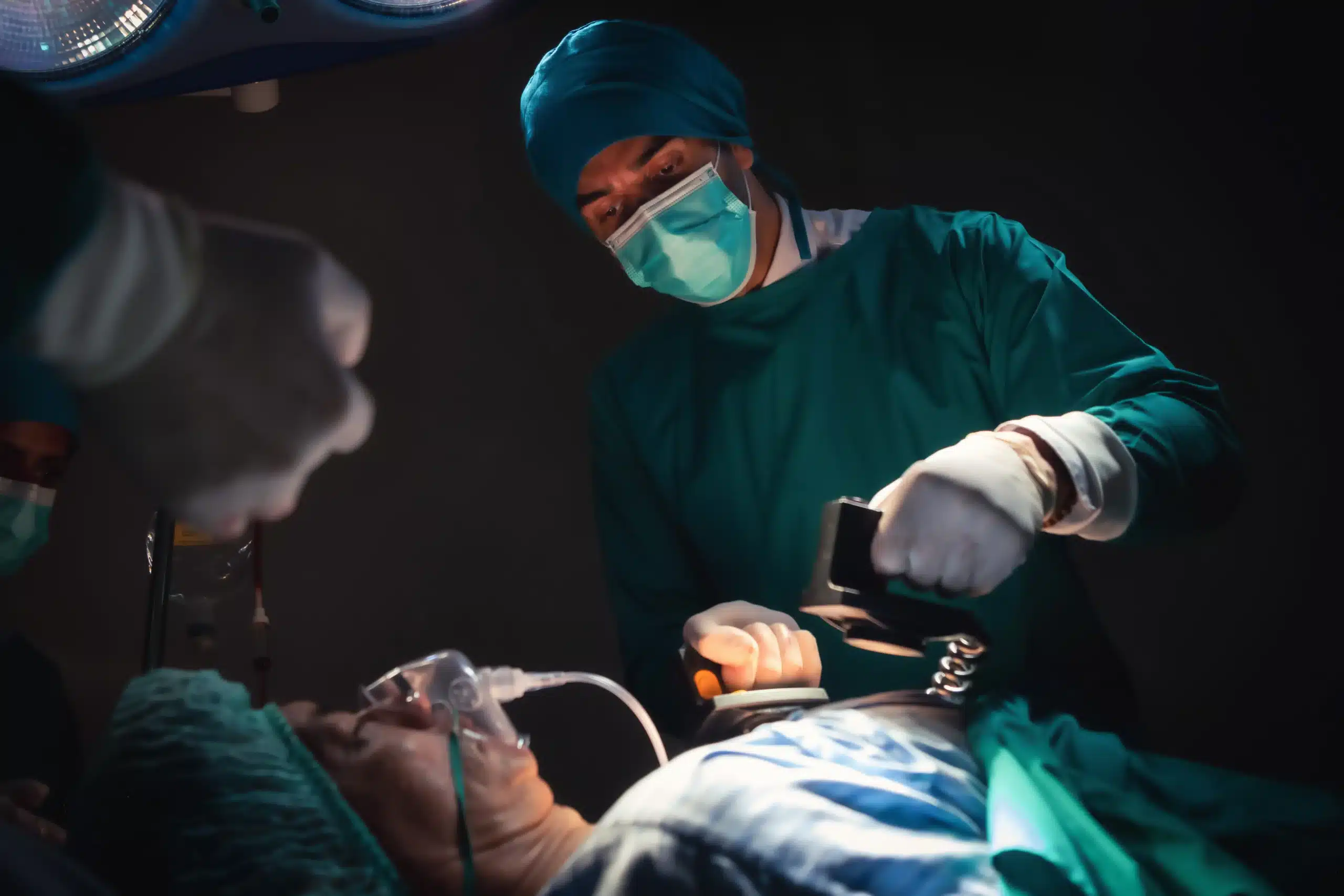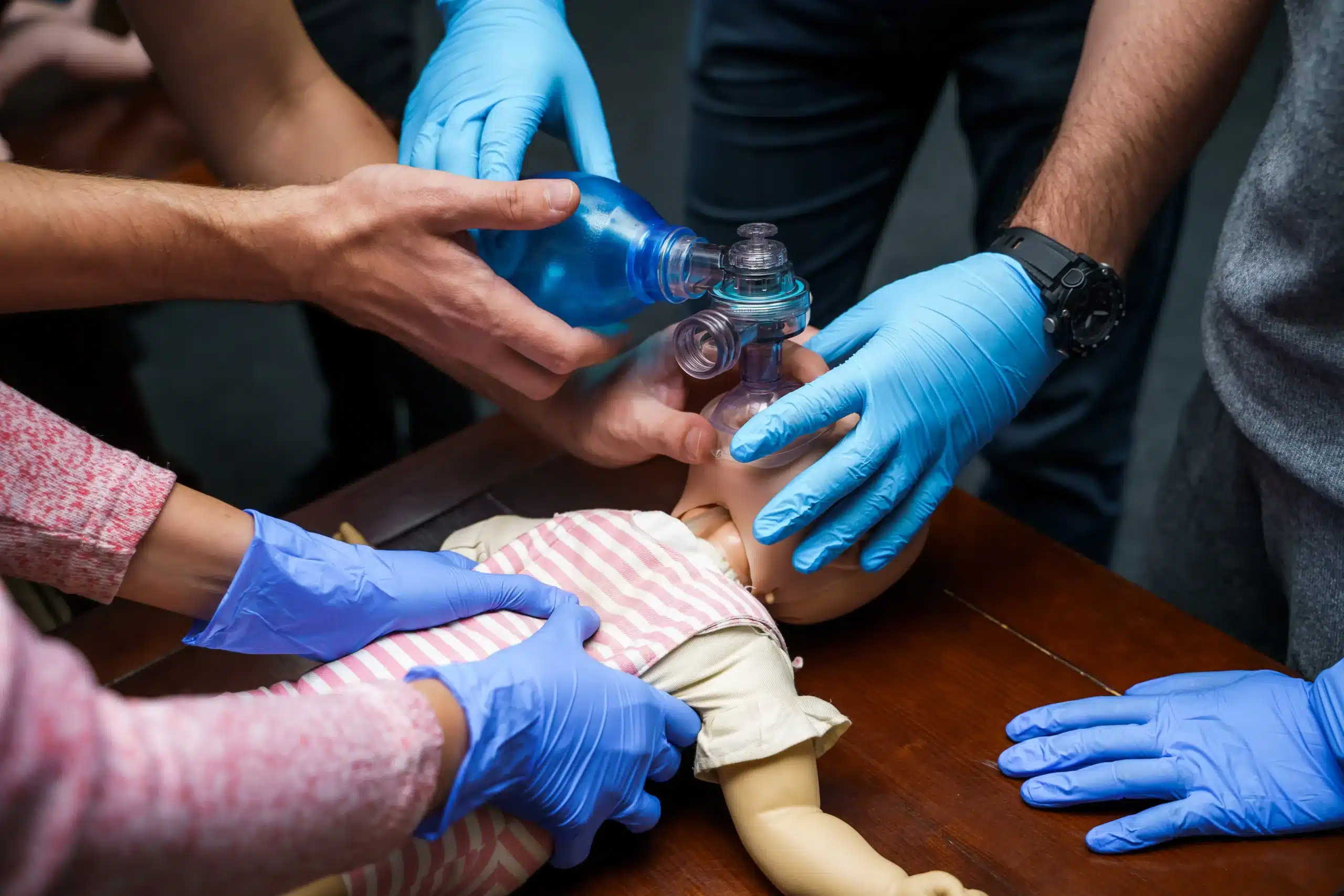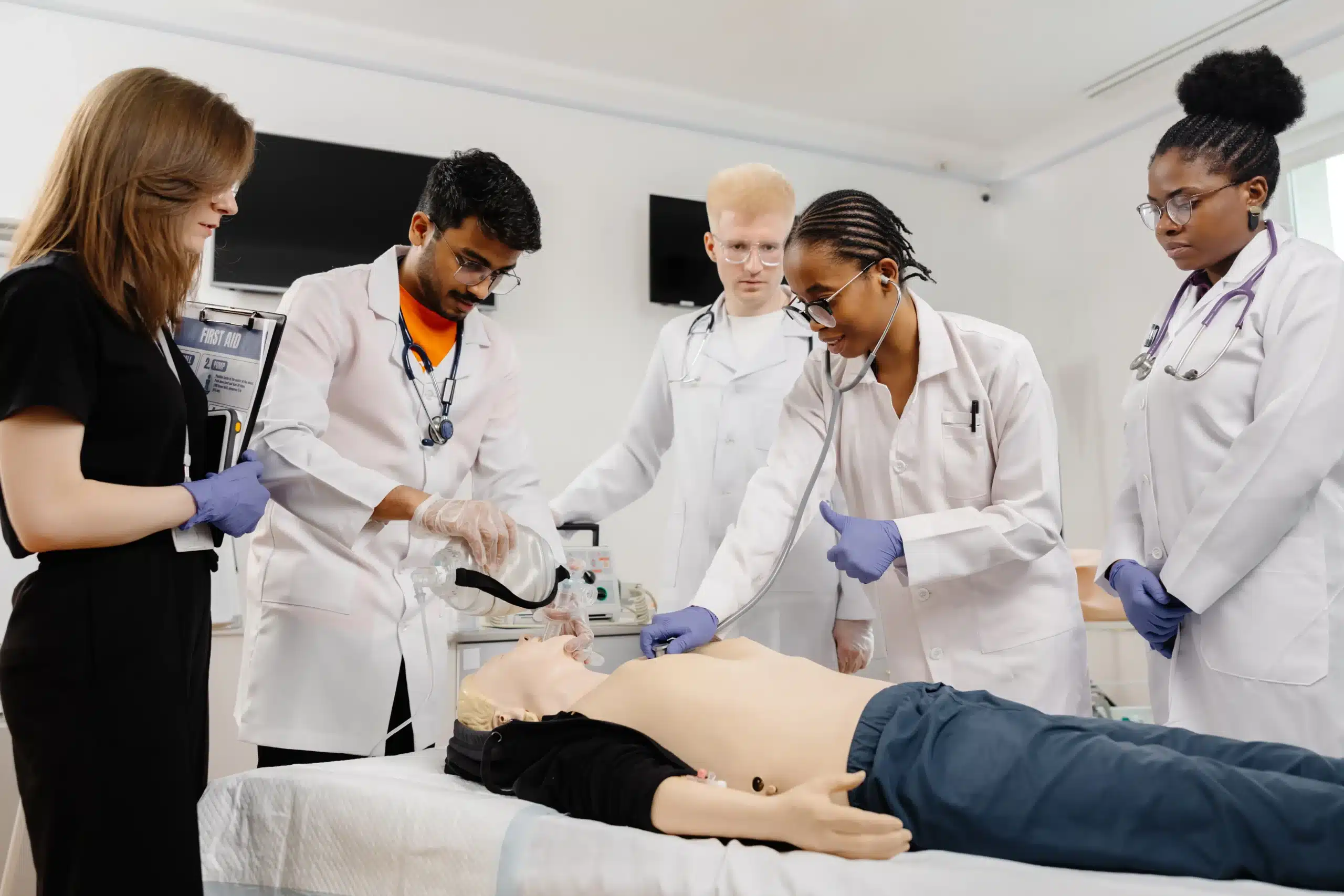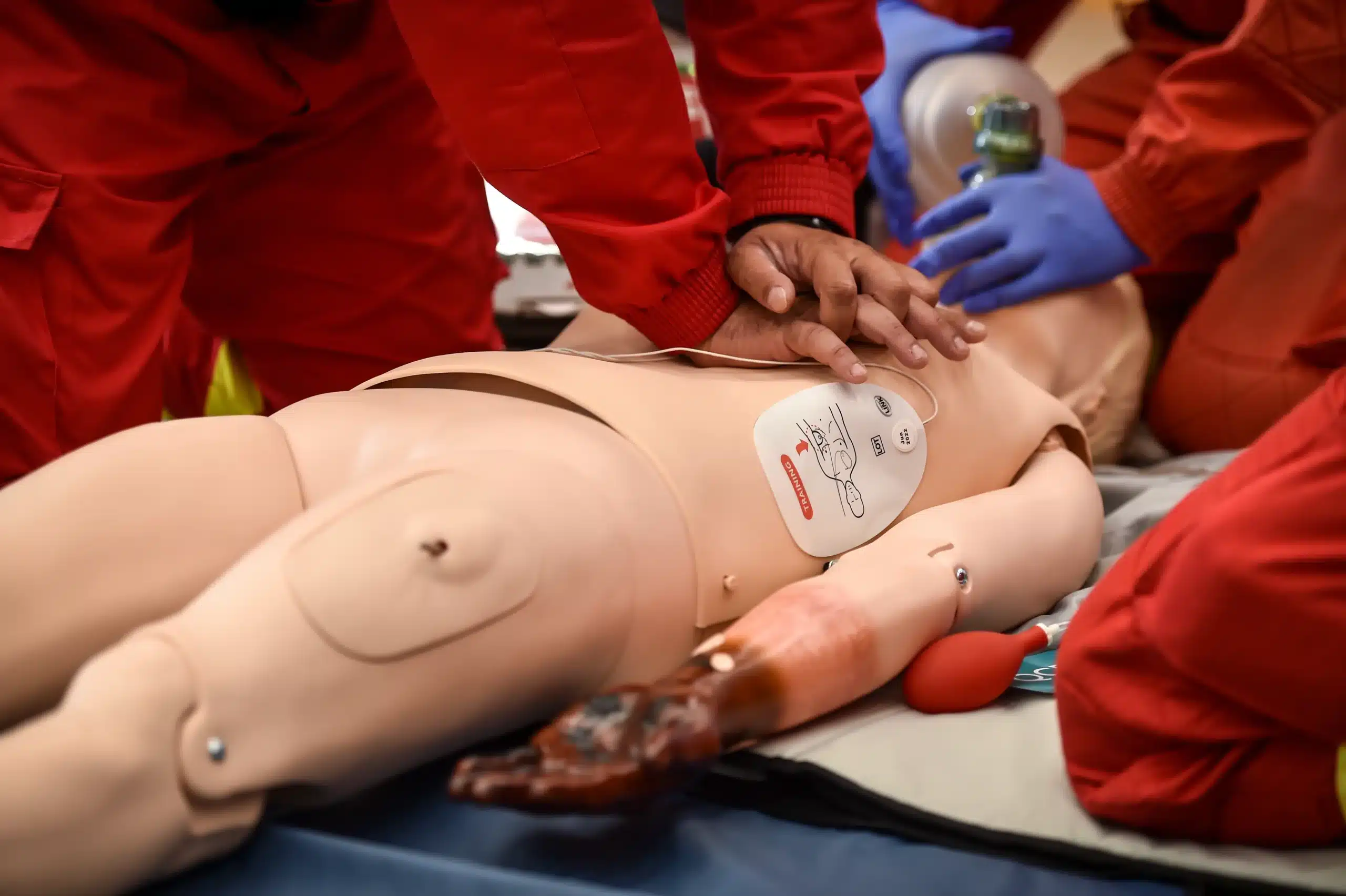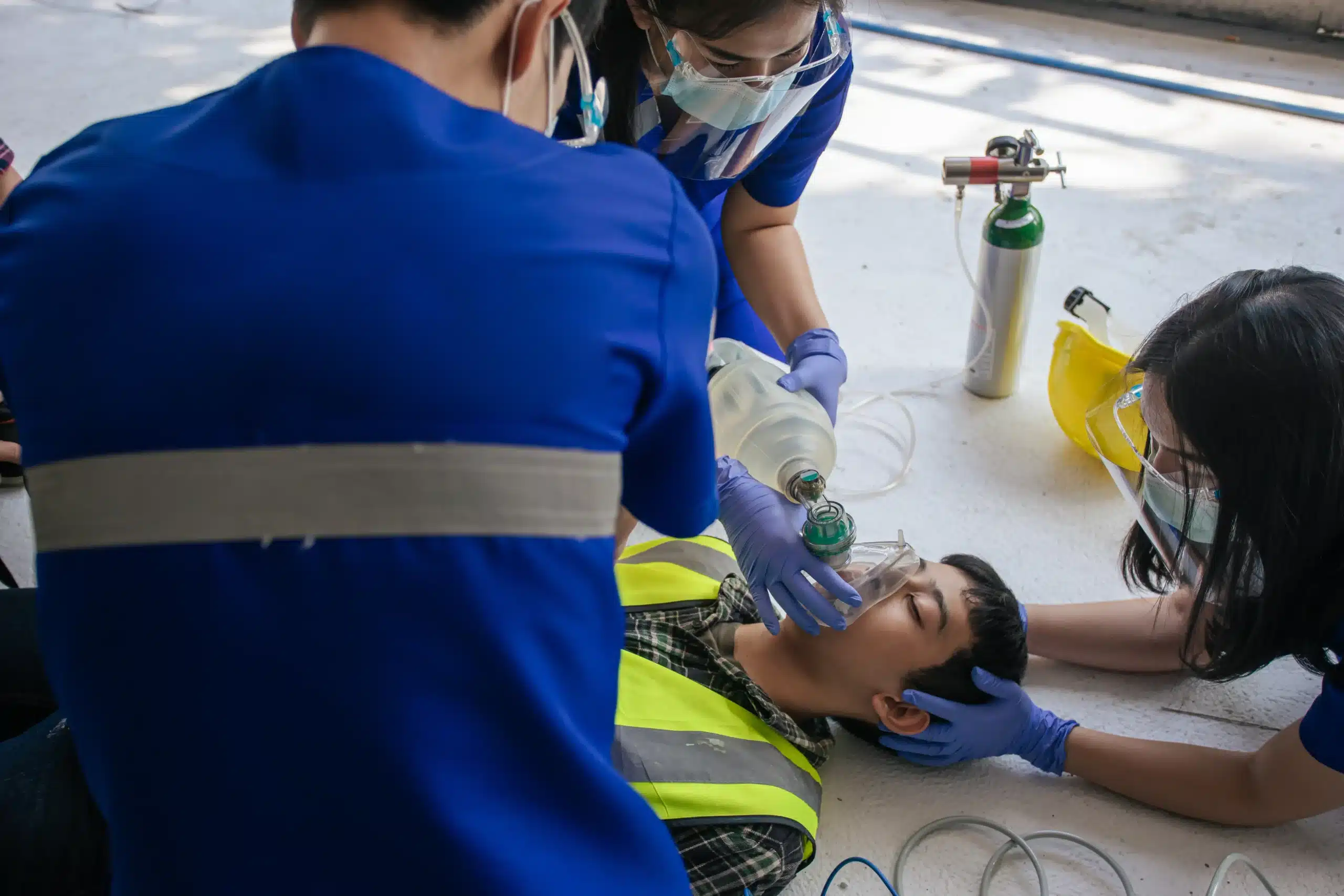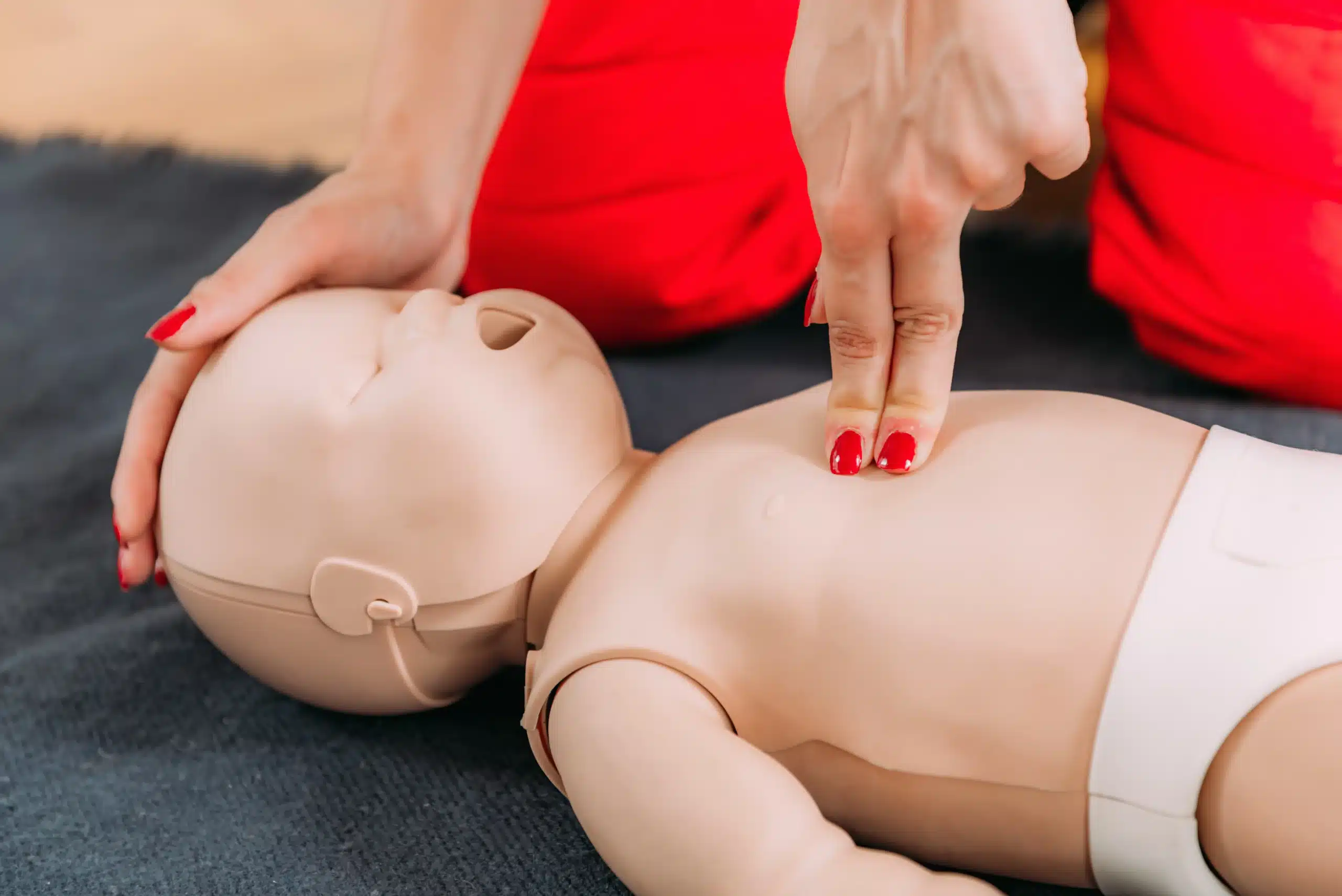Learning CPR can feel empowering, like suddenly having a superpower—the ability to save a life. But where do you start? This guide breaks down everything you need to know about CPR courses, from the basics to advanced training. Whether you’re a healthcare professional, a concerned parent, or simply someone who wants to be prepared, we’ll help you find the perfect CPR courses near me and understand why these skills matter. We’ll cover different types of CPR courses, the impact they can have, and how to choose the right course for your needs. Plus, we’ll discuss online vs. in-person training, accreditation, costs, and top providers. Let’s equip you with the knowledge and confidence to make a difference.
Key Takeaways
- CPR skills are essential for everyone: Learning CPR, whether basic or advanced, empowers you to respond effectively to medical emergencies and potentially save a life. Find a course that fits your individual needs and professional goals.
- Hands-on practice and reputable providers are key: Choose a CPR course that emphasizes hands-on training and is accredited by a recognized organization like the AHA or HSI. This ensures you receive high-quality instruction and a valuable certification.
- Maintain your skills through regular renewal and continuing education: CPR certification is an ongoing commitment. Stay prepared by renewing your certification every two years and consider advanced courses to expand your knowledge and expertise.
What are CPR Courses & Why Do They Matter?
CPR courses teach you how to respond to medical emergencies, potentially saving a life. From recognizing cardiac arrest to performing chest compressions and using an AED, these courses give you the knowledge and confidence to act quickly and effectively. But why are these skills so important, and what types of courses are available? Let’s take a look.
CPR Course Types
CPR isn’t one-size-fits-all. Different situations require different training levels. Basic CPR courses cover the essentials for adults, children, and infants, often including AED training. More advanced courses, like ACLS (Advanced Cardiovascular Life Support) and PALS (Pediatric Advanced Life Support), are designed for healthcare providers and cover more complex scenarios. You’ll also find specialized courses like NRP (Neonatal Resuscitation Program) for newborns and First Aid training for injuries and other medical issues. The right course for you depends on your individual needs and goals. Safety Training Seminars offers a range of AHA-certified courses to meet diverse needs.
Lifesaving Impact & Career Benefits
Knowing CPR can make a real difference. Studies like this one from the American Heart Association show that effective CPR significantly improves survival rates from cardiac arrest. By learning CPR, you become a critical link, providing immediate assistance until professional help arrives. Beyond potentially saving a life, CPR certification can boost your career. Many healthcare, education, and even some non-medical jobs require or prefer candidates with CPR and First Aid certifications. It shows you’re committed to safety and preparedness—valuable assets in any field.
Using CPR Skills in Everyday Life
While we hope you never face a medical emergency, CPR training prepares you to act when needed. You can use these skills anywhere—at home, work, or in public spaces. You might help a family member, a stranger, or even a pet. Real-life stories highlight the impact of CPR training, empowering you to make a difference and potentially change an outcome.
Find the Right CPR Course
So, you’ve decided to get CPR certified—fantastic! Now, how do you pick the right course? This section breaks down what to look for, whether to go online or in person, and how to make sure your certification is recognized.
Choosing a Course: Factors to Consider
When choosing a CPR course, think about what you need from the training. A study published on PubMed highlights how individual factors, your prior training, and even rescuer fatigue can affect CPR quality. The American Heart Association (AHA) recommends that any solid CPR course covers three key areas: recognizing when CPR is needed, hands-on practice, and understanding how to use a defibrillator. Consider these points as you browse different courses. Do they offer plenty of hands-on practice? Do they cover AED training? These are good questions to ask potential providers. For courses in San Francisco, check out these options for BLS, ACLS, and PALS certifications.
Online vs. In-Person CPR Training
Online CPR training has become increasingly popular, and for good reason. It offers flexibility and can be more accessible for people who can’t attend in-person sessions, as CPR Certification Now points out. However, as ATIA notes, online training isn’t quite the same as face-to-face instruction. Hands-on practice is a critical part of CPR training, and while some online courses offer ways to simulate this, it’s not a perfect substitute. Think about your learning style. Do you learn best by doing? If so, an in-person class might be a better fit. If you’re looking for a refresher or need a more flexible schedule, a blended learning approach (combining online modules with in-person skills practice) might be a good compromise.
Accreditation & Credentials: Choosing a Provider
Before you sign up, check the provider’s credentials. Are they accredited by a nationally recognized organization like the AHA or the Health & Safety Institute (HSI)? HSI, for example, is nationally accredited, and their programs are widely accepted. Safety Training Seminars specializes in CPR training based on AHA, HSI, and American Safety & Health Institute standards. Choosing an accredited provider ensures your certification meets established standards and will be recognized by employers and organizations. Look for providers who emphasize real-world scenarios and offer opportunities for ongoing learning. Your CPR skills can save a life, so invest in high-quality training from a reputable provider. Check out our low price guarantee for more information.
CPR Certification: What to Expect & How Much It Costs
Certification Duration & Renewal
CPR certifications are typically valid for two years. This standard applies to most major organizations like the American Red Cross. After two years, you’ll need to renew your certification to stay up-to-date on the latest guidelines and maintain your skills. Regular renewal ensures you’re always prepared to provide effective assistance in an emergency. Check with your certifying organization for specific renewal requirements.
Typical Costs & Discounts
CPR training costs vary based on the provider, course type, and your location. Basic CPR training usually falls between $20 and $55. Specialized courses, such as Pediatric CPR, might range from $25 to $40. Combined CPR and First Aid training typically costs between $40 and $60. Many providers offer discounts for group registrations or members of certain professional organizations. Check with your chosen training center for potential cost savings. For a good overview of CPR costs, visit My CPR Certification Online.
Top CPR Training Providers
Finding the right CPR training provider is essential for a quality learning experience. Here are some reputable organizations to consider:
American Heart Association
The American Heart Association (AHA) is a well-respected authority on CPR training. Their courses blend hands-on practice with instruction on using defibrillators. The AHA offers programs for everyone from healthcare professionals to community members.
Red Cross
The American Red Cross offers a wide range of CPR classes, both in-person and online. This flexibility makes their training accessible to a broad audience. Red Cross certifications are widely recognized and trusted.
National CPR Foundation
The National CPR Foundation provides various CPR and first aid courses tailored to different needs. They focus on providing relevant training based on your specific circumstances.
Safety Training Seminars
Safety Training Seminars offers AHA-certified courses in CPR, BLS, ACLS, and PALS. They also provide First Aid and EMSA certifications, making them a comprehensive choice. Safety Training Seminars offers CPR courses in San Francisco and has a low price guarantee.
ProCPR
ProCPR offers nationally accepted online CPR and first aid training. Their online format is convenient for busy schedules and meets many employers’ requirements.
Health & Safety Institute
The Health & Safety Institute (HSI) is a nationally accredited organization offering various emergency care training programs. Their courses are frequently used by employers and regulatory agencies.
American Safety & Health Institute
The American Safety and Health Institute (ASHI) provides nationally accepted certification courses in a range of areas, including CPR, AED, first aid, and emergency oxygen administration. Their comprehensive training ensures participants gain a well-rounded skill set.
Get the Most Out of CPR Training
CPR training is more than just a certification—it’s a skill that can save lives. To truly benefit from your CPR course, focus on preparation, active participation, and ongoing development.
Preparing for Your Course
Before you arrive, take a moment to familiarize yourself with the core components of CPR. The American Heart Association (AHA) emphasizes three key elements: recognizing when CPR is needed, practicing hands-on chest compressions, and understanding how to use an automated external defibrillator (AED). Mentally preparing yourself for these topics will make the learning process smoother and more effective. Check out our BLS courses in San Francisco to get started.
Hands-on Practice & Skill Retention
The effectiveness of CPR hinges on proper technique. This includes maintaining the correct compression rate (at least 100 compressions per minute), compression-to-ventilation ratio (30:2), and compression depth. Active participation in hands-on practice during your course is crucial for mastering these skills. Regular refresher courses are also essential for maintaining proficiency and confidence. Consider our ACLS courses in San Francisco to build upon your foundational CPR skills.
Advanced Courses & Continuing Education
Once you’ve completed your basic CPR training, consider expanding your knowledge with advanced certifications like Advanced Cardiovascular Life Support (ACLS) or Pediatric Advanced Life Support (PALS). These courses delve deeper into life-saving techniques and are particularly beneficial for healthcare providers. For those interested in neonatal resuscitation, our NRP courses offer comprehensive training. Continuing your education not only enhances your skills but also demonstrates your commitment to providing the best possible care. Our low price guarantee ensures you receive high-quality training at an affordable price.
Related Articles
- Find CPR Classes Near Me: Your Complete Guide – San Francisco CPR Classes
- CPR Certification in San Francisco: Your Complete Guide – San Francisco CPR Classes
- CPR Classes in SF: Find the Right Course for You – San Francisco CPR Classes
- Your Guide to CPR Classes in Daly City – San Francisco CPR Classes
Frequently Asked Questions
What’s the difference between BLS, ACLS, and PALS?
BLS (Basic Life Support) teaches the essentials of CPR, AED use, and relieving choking. It’s suitable for anyone, including healthcare providers, teachers, and the general public. ACLS (Advanced Cardiovascular Life Support) is designed for healthcare professionals and covers more complex situations like cardiac arrest and stroke. PALS (Pediatric Advanced Life Support) focuses on the specialized needs of infants and children during emergencies. The best choice depends on your profession and level of experience.
How often do I need to renew my CPR certification?
CPR certifications are typically valid for two years. Renewal involves retaking the course to refresh your skills and learn about any updated guidelines. Staying current with your certification ensures you’re always prepared to respond effectively in an emergency.
What if I can’t attend an in-person CPR class?
Online CPR courses offer a flexible alternative to traditional classroom settings. While they may not offer the same level of hands-on practice, they can be a convenient option for those with busy schedules or limited access to in-person classes. Some providers offer blended learning, combining online modules with in-person skills sessions, to provide a more comprehensive experience.
How much does CPR training cost?
The cost of CPR training varies depending on the provider, course type, and location. Basic CPR courses generally range from $20 to $55, while more specialized courses like ACLS and PALS may be slightly higher. Many providers offer discounts for group registrations or members of certain organizations. It’s always a good idea to compare prices and check for any available discounts before enrolling.
How do I choose a reputable CPR training provider?
Look for providers accredited by nationally recognized organizations like the American Heart Association (AHA) or the Health & Safety Institute (HSI). Accreditation ensures the training meets established standards and is widely accepted. Also, consider the provider’s experience, course content, and teaching methods. A good provider will emphasize hands-on practice, real-world scenarios, and ongoing learning opportunities.



